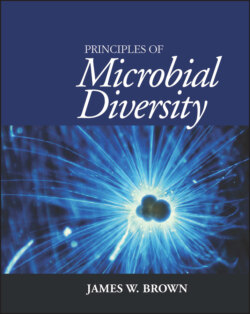Читать книгу Principles of Microbial Diversity - James W. Brown - Страница 42
Deciding which organisms and sequences to use in the analysis
ОглавлениеThe sequences of genes, RNAs, or proteins contain two very different kinds of information: structural/functional information and historical information. Think of it this way: any particular amino acid in a specific protein is what it is (say, for example, an alanine) in part because it facilitates the formation of the correct structure and function of the protein. But usually there are a number of alternatives that might function just as well. The reason it is what it is, and not any of these alternatives, is that it was inherited from a successful ancestor. This is historical information. Comparisons among an aligned collection of homologous sequences can be used to sort out both the structure of the functional molecule (especially for RNAs) and their historical relationships: a phylogenetic tree.
Phylogenetic trees are usually generated by using alignments of single genes, RNAs, or proteins, but no such sequence is either ideal or universally useful for the generation of informative phylogenetic trees. This being said, some sequences do carry more phylogenetic information than others; these sequences can be called “molecular clocks.”
